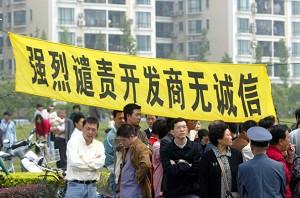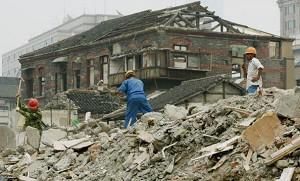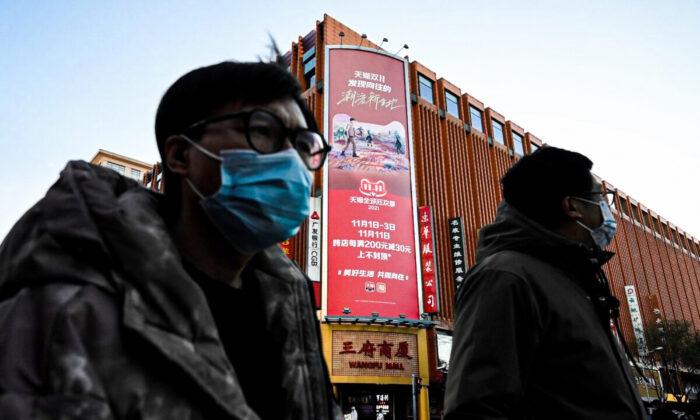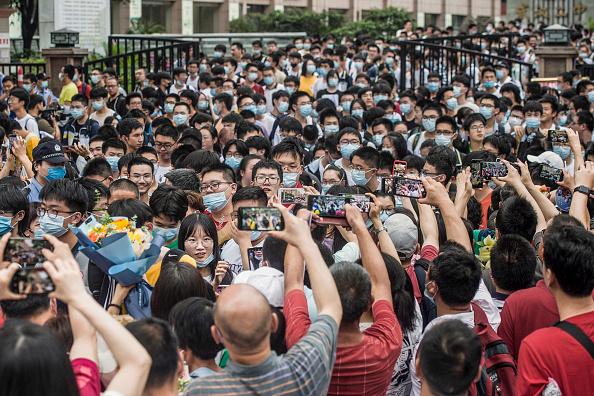After the 1989 Tiananmen Square Massacre, the Chinese communist officials developed a new way to make windfall profits—the “land enclosure movement”. In recent years numerous peasants have been deprived of their fields, and city dwellers have been forced to relocate, receiving only very moderate, if any, compensation. These Chinese people are victims of the greed of their local governments, who traded the people’s land for political achievements and financial profits.
Early June, the Chinese Ministry of Land and Resources issued several orders, one after another, prohibiting illegal trade. The Ministry first banned issuing new land permits for building villas, and then announced that illegal land development is so rampant that at least 60 percent of recent urban land development projects involve illegal land acquisition. In some cities, this number is as high as 90 percent, according to the Ministry. To demonstrate its determination in implementing order in the land market, the Ministry went as far as imposing a minimum number of land related cases for each province to solve.
The background behind the Ministry’s new actions is the increasing mass protest of Chinese peasants against land enclosure by local governments. On June 8, the Guangdong government arrested seven peasant representatives for “extortion” after a large-scale protest against illegal land acquisition in Sanzhan Harbor of Foshan City, Guangdong Province.
Government Key Force in Land Trade Abuse
The key to understanding these conflicts involves the idiosyncrasy of the Chinese real estate market and the embarrassing role the local governments play in this market. Besides real estate developers and house buyers, the Chinese real estate market also involves two other parties, namely, the original owners of the land (peasants deprived of their fields, and city dwellers forced to relocate) and local governments who seized the land from the original owners. The central government becomes the arbitrator in land related conflicts.

No doubt, among the above-mentioned parties involved in real estate, the local government plays the most important role. On the one hand, it “purchases” land from the peasants in various means. On the other, it sells the right of usage of the land to real estate developers. Through such purchasing and selling, the local government is pushing land onto the market.
But why are local governments so enthusiastic about land trading? The answer is obvious: the large difference between the purchase price and selling price of the land. Actually, the profit is so large that it has become a major fiscal resource for Chinese local governments. Statistics show that in the past five years, profits from selling land, and tax from the real estate industry, have accounted for 45 percent to 60 percent of China’s government revenue.
While the Ministry of Land and Resources announced its determination to regulate the land market, a newspaper reported that a chief official of a city in north Jiangsu Province was boasting that the local government’s goal was to triple house prices in four years. According to the report, in the city the said official is in charge, the average house price is 3,000 yuan per square meter (US$ 34 per square foot), whereas the monthly income of an average resident is only 800 to 1,500 yuan (US$ 100 to 188). Many of the residents are worried about the fact that they cannot afford a house.
In the eyes of Chinese local governments, real estate development and increases in house prices are “political achievements” and a short cut to large revenues. For the officials, issuing land permits is a major resource for obtaining personal profit. According to the State Auditing Administration, over 90 percent of the officials charged with corruption are involved in illegal issuance of land permits. This said, what is the purpose of a few meetings and decisions by the Ministry of Land and Resources, a department with no legislative power? The Ministry of Land and Resources has been maundering about regulating the land market since the 1990’s, but illegal land trade has never stopped growing.
The following example may give people an idea of the amount of profit the governments have made from land trades. When the Beijing government purchased land from Liuquan Village, a village close to the south Fourth Ring Highway, the peasants got 117 yuan for each square meter (US$ 1.3 per square foot). The land was later sold at 6,750 yuan per square meter (US$ 75 per square foot). That means the government acquired the land at almost zero cost. It is not difficult to predict that the Ministry of Land and Resources is going in the wrong direction by expecting the local government to help regulate the land market, as that government itself plays the major role in illegal land acquisition and trade.
Home Buyers, Landowners, All China Victim of Land Enclosure Abuse
The victims of the profit earned by local governments and corrupted officials are the Chinese people. The primary victims are the 60 million peasants who have lost their fields—their only means of living. The peasants only get a tiny amount of subsidy for their loss of land, and can find no way to feed themselves and their families afterwards. You cannot blame them for protesting.
The second group of victims is house buyers. Many middle class people call themselves “slaves of houses”, because after buying a house with a loan, they can hardly bear the burden of the monthly payment.
The whole Chinese nation itself is also victim to the land enclosure movement, because national resources are exhausted, while ensuring short-term benefits for local governments. The over-development of real estate directly leads to the reduction of plow-lands. According to the statistics published by the Ministry of Land and Resources, in the past ten years, China’s plow-land has decreased by 120 million Chinese acres (80,000 square kilometers). The Ministry of Agriculture also pointed out that if plow-land decreases and population grows at current rate, by 2020 China will be confronted with a plow-land shortage of over 100 million Chinese acres (67000 square kilometers).
The Chinese central government has been trying to regulate the land market for a long period of time, but has never succeeded in it. The current collective ownership of land by the local governments protects these governments in their land trading. The only way to fundamentally solve the land enclosure problem is by giving land ownership to individuals. If land is privately owned, local government would be unable to get away with selling land for their own profit.





